Announcing Artist Professional Development Grants Round 24
March 29, 2024Announcing Artist Professional Development Grants | Round 26 Recipients
November 19, 2024ANNOUNCING
Artist Professional Development Grants | Round 25 Recipients
Great Meadows Foundation is pleased to announce the award of 12 grants to artists in the Kentucky region through the 25th round of the Artist Professional Development Grants program. These grants will enable recipients to travel to visit major exhibitions, conferences, and artist residencies, and connect with other professionals in the field whose expertise can help them develop their critical practice.
Learn more about the Round 25 Grant Recipients and their upcoming travels below.
John Akre
He / Him
www.johnakre.com
@johnmakre
Louisville, KY
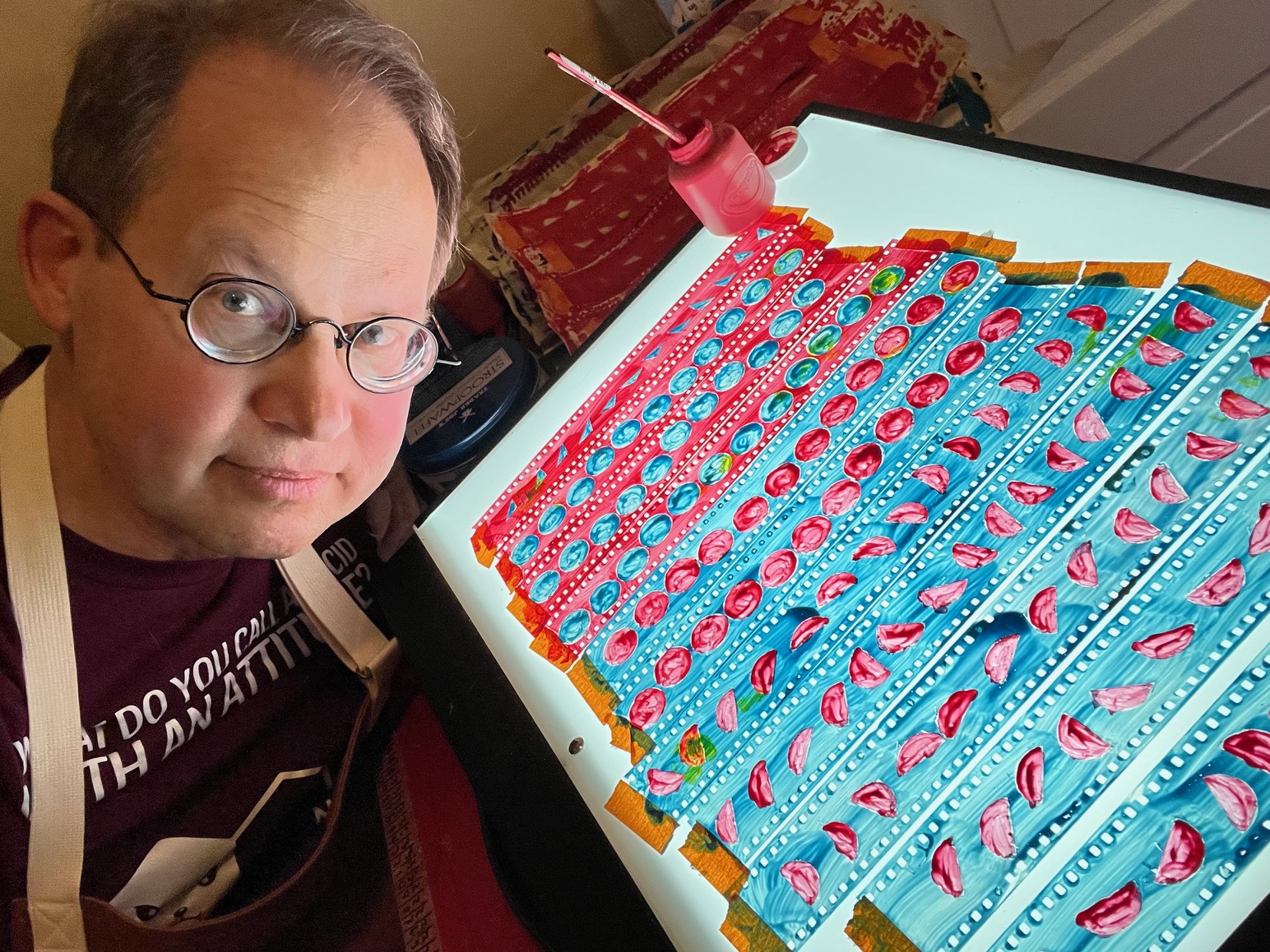

Where will you be traveling?
Ottawa, Canada
What will you be traveling for?
To attend the Ottawa International Animation Festival and other art exhibition experiences there.
Can you give a short summary of your art practice?
I am an animator who works in very small animation worlds in the work I do at my home studio and in the realms of the much bigger in the animation I do in public places. I like to explore ideas related to cities and learning in my work. I began animating when I was nine and spent most of my life creating documentary projects for community television before rediscovering and relearning animation in these, my later years.
What are some of the inspirations for your practice?
My main inspirations are the many animation artists who worked solo in the realms of the small and tedious. Among those who inspire me are animation pioneers Lotte Reiniger, Quirino Cristiani, Harry Smith, Oskar Fischinger and Norman McLaren, and all the independent animators who created the short cartoons in the early Sesame Street shows. I always strive to find something like the Beginner Mind.
Scott T. Anderson
He / Him
@sleeepyanderson
Louisville, KY

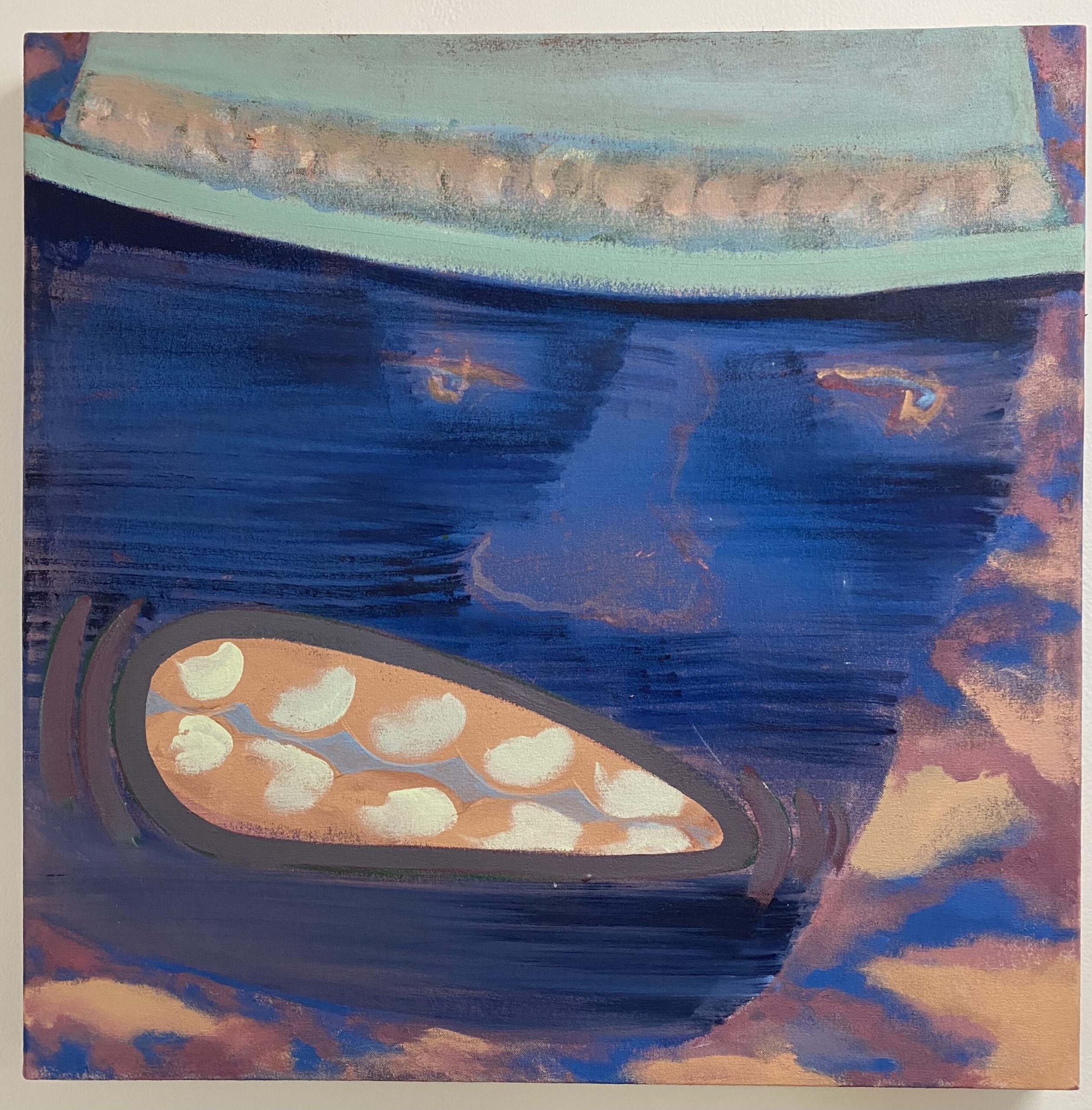
Where will you be traveling?
New York City, NY
What will you be traveling for?
I’m traveling to New York to visit the many museums NYC has to offer as well as having studio visit with Angel Otero and meeting with the Monique Long 2023 Great Meadows Curator-in-Residence.
Can you give a short summary of your art practice?
I am primarily a painter whose work is representational but occasionally veers into abstraction. I work on canvas, panel, and paper using acrylic, oil, graphite, Spray paint, watercolor, gouache, ink, wine, and coffee. The process of time, history, myth, memory, and western archetypes such as the American Cowboy, are the central conceptual concerns of my practice. The emergence of American iconography in my at work surfaced after moving back to Kentucky in 2018.
What are some of the inspirations for your practice?
My inspiration for making is a wide river, maybe as wide as the moon is high. A shortlist of painters I look at and find inspiration from include; Phillip Guston, Henry Taylor, Peter Doig, Katherine Bernhardt, Angel Otero, Eddie Martinez, Alice Neel, Marlene Dumas, Tal R. I look at a lot of folk art and am interested in that approach to making, in particular the experimentation of materials, and an intuitive approach. I pull a lot from all sorts Americana, truck stop ephemera, Wild West books, Western movies, etc. I’m interested in mythology and history, and specifically the archetype of the American cowboy, as seen in Western film, and its use as an agent of propaganda.
Lucy Azubuike
She / Her
www.lucyazubuikeart.com
@lazubu20
Frankfort, KY


Where will you be traveling?
Berlin and Munich, Germany
What will you be traveling for?
I plan to conduct studio art visits with two local artists: a sculptor and a photographer. I also aim to visit as many museums and galleries as possible to capture “aha” moments that would benefit my art practice.
Can you give a short summary of your art practice?
I use nature, especially trees, to demonstrate the power of perception and perspective. My work spans diverse media: photography, painting, performance, video art, installations, and sculpture. My ‘Wear and Tear’ series features paintings with paper exposed to natural elements like sun, rain, and snow to depict the power of power. I also explore Tree art, finding and defining familiar forms in trees through photography. My “Triangle: You Me Tree art” projects highlight the interconnectedness of all living things. I aim to create a meditative experience that awakens social and environmental consciousness, encouraging appreciation for nature, the self, and our fellow humans.
What are some of the inspirations for your practice?
“To see, we must forget the name of the things we are looking at.”
~Claude Monet.
Claude Monet, Marcel Duchamp, and Agnes Martin are great advocates of perception shift: it is never always what it seems. Hence, one is encouraged to look at a tree without knowing what a tree should be like. This practice liberates the mind and allows one to see beyond preconceived notions of oneself and others. It permits one to experience things for oneself, especially to find limitless joys that exist where there seem to be none. My art practice is inspired by the natural world, especially trees, and their intricate forms and patterns. But mostly, my gut instinct leads me first and foremost to art creations. Through my works, viewers introduce me to like-minded artists like Nils-Udo, Marina Abramović, Frida Kahlo, and Kara Walker, just to name a few. I admire William Kentridge and Prof. El Anatsui for their relentlessness, energy, and uniqueness.
Brennen Cabrera
He / They
www.brennencabreraart.com
@brennen_cabrera
Louisville, KY


Where will you be traveling?
Berlin, Germany
What will you be traveling for?
I plan to attend Berlin Art Week, view additional exhibitions and public works, and meet 4 local artists who work in painting and/or performance. One of them runs a transdisciplinary performance art space called New Fears.
Can you give a short summary of your art practice?
I work in mixed media painting and performance, exploring themes of neurodiversity, ableism, queer politics and theory, subculture, and pop culture. My painting practices are planned and/or intuitive, including traditional and nontraditional elements such as abstraction, realism, destruction, and mending. My performances are considered high-tech and incorporate vulnerability, catharsis, and endurance. Recently, in painting, I’m shifting direction to work with more attention to color and realist details, and abstractions with a stronger focus on destructive elements.
What are some of the inspirations for your practice?
Anything groundbreaking, and pushing limits. (With consideration.) People that know how to explore difficult places without fear. I consume media and entertainment that express strong levels of joy and pain. I find that spectrum of emotion relatable to my neurodivergence, autism, which is also a major inspiration for my practice. Additionally, the neurodivergent trait of justice sensitivity intensifies the ways I look at socio political ideas. Throughout my childhood to early adulthood, I was drawn to surrealist movements. Recent brutal practices, informed by “The Red House”, may find ties to movements such as Vienna Actionism.
Shohei Katayama
He / Him
www.shoheikatayama.com
@shohei_katayama_
Louisville, KY


Where will you be traveling?
Brooklyn, NY
What will you be traveling for?
To participate in the NARS International Residency.
Can you give a short summary of your art practice?
My art practice explores interconnectedness through the theories of physics, environmentalism, and spirituality. I create sculptures and installations designed to evoke emotional responses and foster collective awe and wonder through digital fabrication, inspired by expeditions to remote sites. I use interpretations of scientific insights through metaphors and allegories to deepen these connections. Recently, I have been working with architectural interventions and public art, using coding and physical computation to manipulate lights, movement, and object behavior. My work aims to create spaces for ritual, reflection, and solidarity, highlighting humanity’s interconnectedness with the natural world and each other.
What are some of the inspirations for your practice?
My impetus for creating environmentally-based content was inspired by the Great East Japan Earthquake and the Fukushima nuclear disaster. These events led me to explore speculative realism, object-oriented ontology, and panpsychism. Influences include theorists Ian Bogost and Timothy Morton, architects like Tadao Ando, visual artists Pierre Huyghe and Olafur Eliasson, technological advancements, ecological philosophies, and the concept of the sublime to evoke visceral responses. Additional inspirations include the origins of cultures and societies, mythologies, theoretical physicist Sara Walker, and my own culture and personal experiences.
Shawn Marshall
She / Her
www.shawnmarshallart.com
@shawn_marshall_art
Louisville, KY


Where will you be traveling?
Venice, Italy
What will you be traveling for?
I will visit the Venice Biennale, collateral events and exhibitions, and meet with a curator who is completing a fellowship at the Peggy Guggenheim Museum.
Can you give a short summary of your art practice?
My work is a result of my interest in the connection between human presence, memory, and our environment. My process is shaped by the integration of my background in architecture, design, and sculpture; all of which inform not only the techniques I employ and the tools I use, but also the consideration I give to structure, form, space, and material. I collect and use discarded materials such as house paint, paper, wallpaper, magazines, cardboard, paper towels, bags, lace scraps, etc. to construct abstract works of art that integrate many layers of paint and discarded material.
What are some of the inspirations for your practice?
My architectural background influences the forms, compositions, and spatial qualities of my work. From an aerial perspective, the works can take on the semblance of ancient cities and overgrown gardens, reminiscent of forgotten structures and urban stratification. Others might resemble ideas of cosmic universes. Up close, the works often resemble the surfaces of billboards as information is constantly added and removed. I aim to create duality and ambiguity between the work and its materials, inviting the viewer into a larger narrative where the artwork fosters reflection, dialogue, and connection with the world around us.
Rebecac Richards
She / They
www.thewebhasnoweaver.com
@thewebhasnoweaver
Louisville, KY


Where will you be traveling?
New York City, NY
What will you be traveling for?
I will be meeting with artists working at the intersection of fashion, performance, and sculpture, as well as visiting exhibitions and events related to my practice.
Can you give a short summary of your art practice?
I am a multidisciplinary visual artist working primarily in the realm of wearable sculpture. My work attempts to critique the paradoxical nature of fashion—a potent means of expression intertwined with the pitfalls of a destructive industry. I transform discarded textiles of mass production into extravagant, ceremonial assemblages that defy categories of expression by subverting traditional gender norms, embracing the fluidity of identity.
What are some of the inspirations for your practice?
I am inspired by the transformative magic of fashion and its contradictory dual power as a mode of both free expression and control. My work aims to expose the seams, deconstruct identity, and remind ourselves of the malleability of reality. I feel a strong connection to the work of Louise Bourgeois, often working with spiders as a feminist symbol of repair and regeneration. My work is also informed by the aesthetics of camp and queer maximalism.
Rachel Singel
She / Her
www.rachelsingel.com
@rachelsingel
Louisville, KY

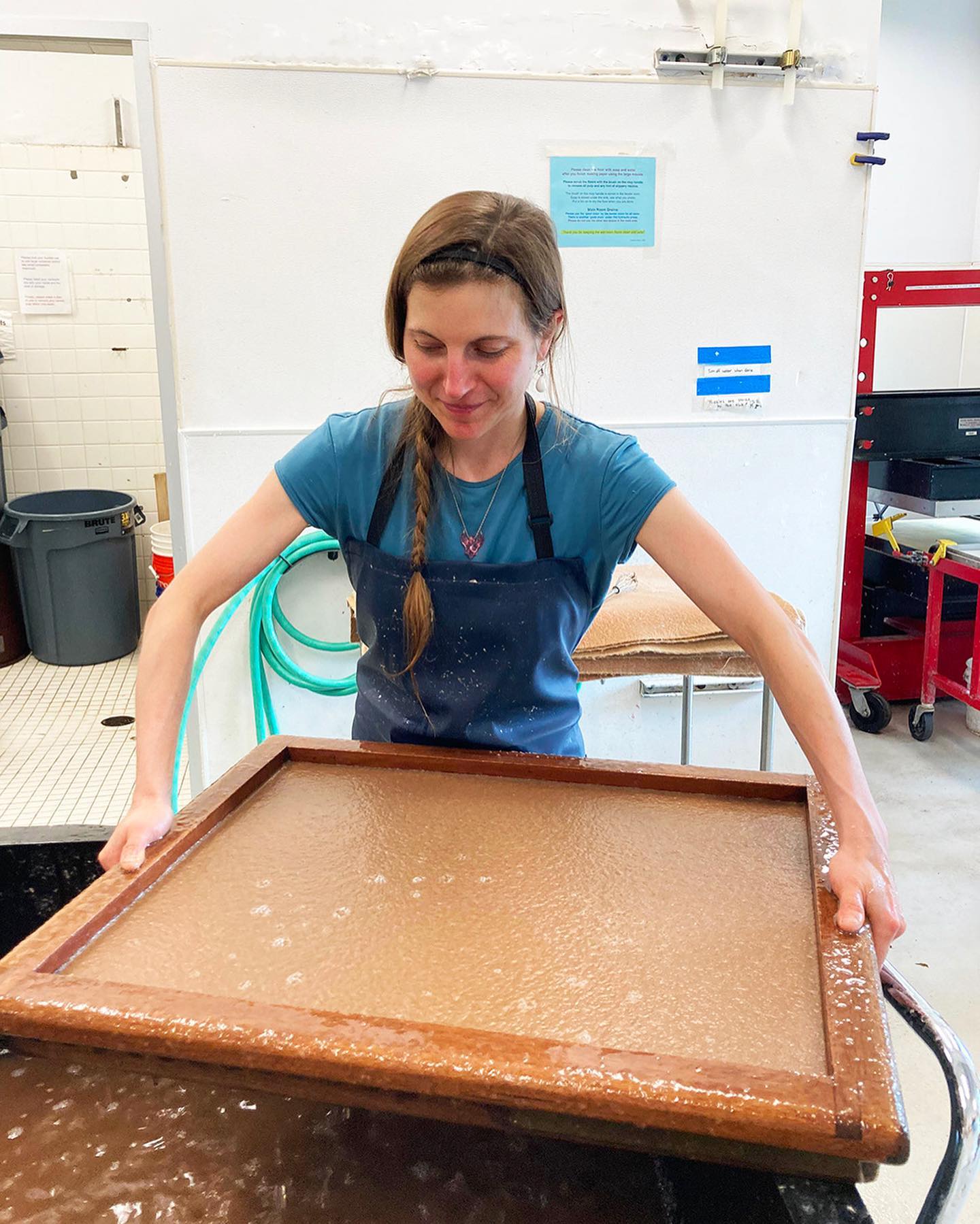
Where will you be traveling?
Kyoto & Tokyo, Japan
What will you be traveling for?
I will be traveling to Japan August 2nd-11th to attend the Young Papermakers’ Meeting in Kyoto, see a series of exhibitions exploring the interactions between nature and humans, and build relationships with other ecologically-minded artists. I have already arranged to connect with papermakers including Paul Denhoed who has been working in Japan for 20+ years. He will meet me in Kyoto at the conference, then take me to Oguni Washi in Niigata to work with Master Papermaker Imai Hiroaki. While in Japan, I will also go to other museums and galleries including the Ota Museum in Tokyo, which has the world’s largest collection of Japanese prints.
Can you give a short summary of your art practice?
Beyond bringing attention to the immense complexity of the natural world, one of my primary goals as an artist is to raise environmental consciousness. I print my etchings on handmade papers made from recycled materials such as old cotton shirts and linen sheets, as well as plant fibers, especially those of invasive plants. Conceptually, the union of process and subject embodies an important metaphor for my views. I hope that making sheets by hand not only can help the environment, but also can promote sustainability.
What are some of the inspirations for your practice?
My work is a response to the intricacies and depth of natural forms. I seek to observe the processes of nature and embody them in my own works of art. I draw inspiration from other environmental artists including Andy Goldsworthy and mentors such as my papermaking professor Timothy Barrett who once said, “Sometimes I worry about what a weird thing it is to be preoccupied with paper when there’s so much trouble in the world, but then I think of how our whole culture is knitted together by paper, and it makes a kind of sense.”
Suyun Son
She / Her
www.suyunson.com
@son.suyun
Louisville, KY


Where will you be traveling?
Gwangju & Seoul, South Korea
What will you be traveling for?
I am going to Gwangju Biennale, the first Asian Biennale and a leader in the contemporary art world. The Biennale’s theme, “Parsori,” addresses issues relevant to my work, how designating space is a political act, creation of boundaries to define closed identities. In Seoul, I will visit the National Museum of Modern and Contemporary Art (MMCA) for their exhibition titled “Connecting Bodies: Asian Women Artists.” This international exhibition displays works of Asian women artists from the perspective of “transcorporeality.” I want to encounter how women from diverse Asian countries navigate, explore, express their gender and cultural identities through diverse works of art.
Can you give a short summary of your art practice?
I am a painter and installation artist whose work primarily challenges the modern sanctification of authenticity. Authenticity imposes a singular, unchanging identity, functioning as a form of authentication. My works present our identities as fluid, multiple and hybrid, impossible to authenticate or market. My abstract expressionist work investigates this style’s historic connection to the sanctification of authenticity. I present identities as borderless and hybrid through works where I blend Korean and English letters by turning them into printed layers and gestures.
What are some of the inspirations for your practice?
I am inspired by Jeongsu Woo, a rising contemporary artist whose works and process are similar to mine. His works are described as giving “sensitive attention to palette, gestures and strokes of the brush, and pictorial composition.” Like myself, he layers different types of genres, like prints and pictorial depictions, while maintaining the primacy of painting. I also experience the power of paint, color and gestures in Donal Martiny’s work. His large sculpture-like paint strokes lift up the medium of the paint as the message itself.
Valerie Sullivan Fuchs
She / Her
www.valeriefuchs.org
@valeriesfuchs
Shelbyville, KY


Where will you be traveling?
Ars Electronica Festival for Art, Technology and Society, in Linz, Austria & Klima Biennale Wien, Vienna, Austria
What will you be traveling for?
At the Ars Electronica Festival, artists, physicists, computer scientists and organists will collaborate so entangled photons could conduct Anton Bruckner’s “Perger Prelude”. Witnessing entangled photons, applied to art, is important to my practice as I am interested in making poetic evidence of invisible energy. This collaboration is just one example of the many collaborations between scientists and artists featured at the festival. In Vienna as part of the Klima Biennale Wien, I will see two exhibitions with artists who address climate change including Alma Heikklia, an artist I met at the Gwangju Biennale in 2016 on a GMF grant.
Can you give a short summary of your art practice?
By re-imagining perceptions of time and energy into landscapes and portraits, I visualize traces of intra-acting energy between nature & us. Within sun-lit, light boxes, time becomes sculptural by superimposition of layers of inkjet/uv printed images of creeks & forests onto clear acetate & plexiglass. Superimposition allows each recorded past moment, to visually merge into the next recorded moment. Singular past moments accumulate into a mass, and intra-act into unexpected landscapes, that connect to the present and place, by the sunlight. My layered videos of people/landscapes morph into non-linear, moving energy masses, ambiguous forms and particles.
What are some of the inspirations for your practice?
Karen Barad, physicist, writes, ‘We are entangled, or “deeply involved” in the intra-action and making of the world.’ From living in the country surrounded by trees, I think about intra-action between humans and nature and sense an interconnected energy that Karen Barad and Pieter Wollenben, author of The Hidden Life of Trees, confirm. Wollenben writes that trees warn each other of invading animals by sending gasses out into the air, change the taste of their leaves to deter pests and communicate thru underground networks of fungi, via electric signals, share food with nearby trees and organisms.
Janna Wardle
She / Her
www.jannawardlestudio.com
@jannahankinswardle
Louisville, KY

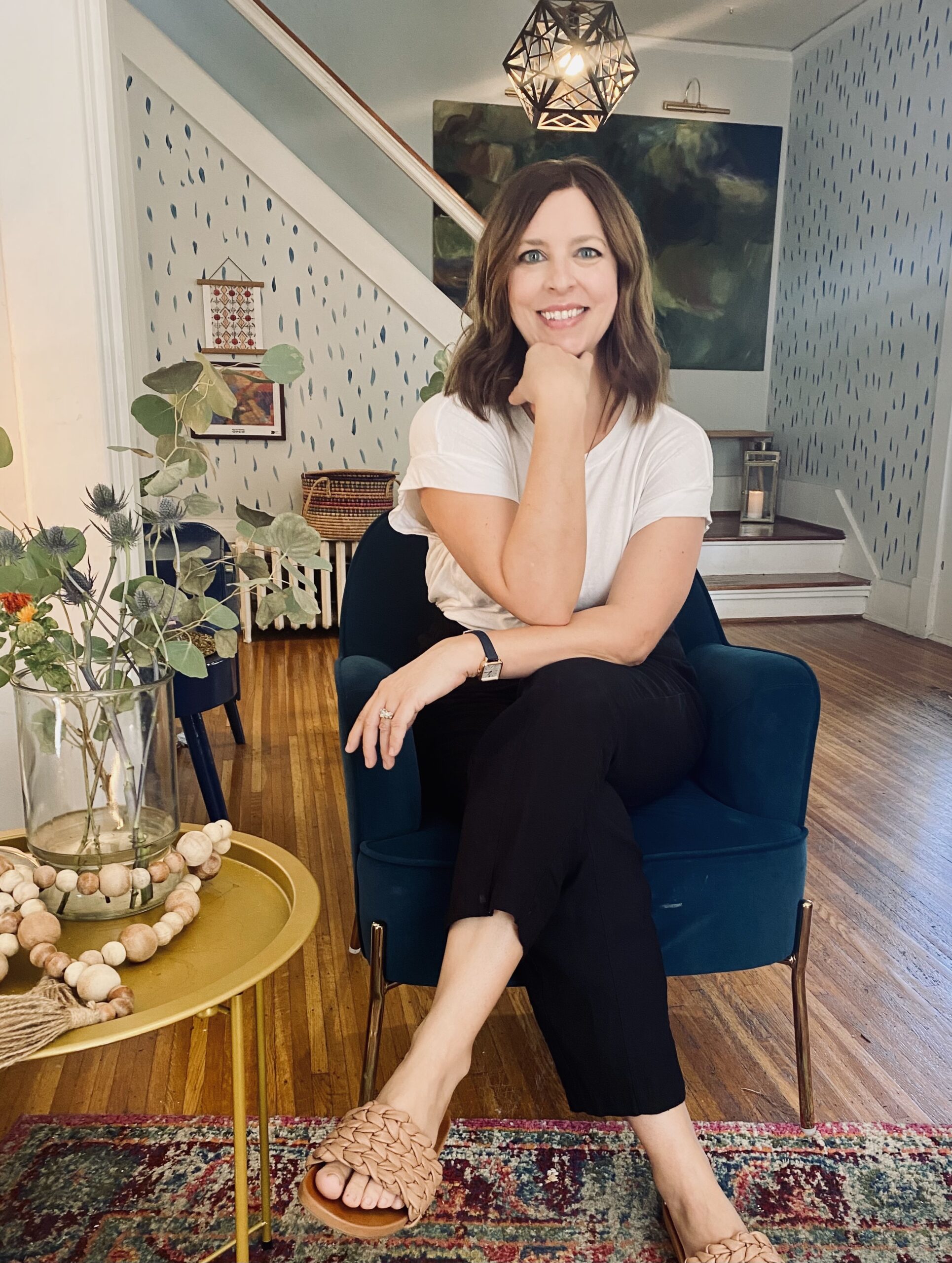
Where will you be traveling?
Venice, Italy
What will you be traveling for?
To attend the Venice Biennale
Can you give a short summary of your art practice?
My work focuses on imagining an alternate reality in which women thrive; a kind of femmefuturism inspired by string theory. Drawing inspiration from different historical time periods, I play with calligraphy, botanicals, and quilt making to create pages from a lost book of feminine wisdom. Thus far, my work is 2D, but I plan to expand into video work soon to deepen my narrative impact.
What are some of the inspirations for your practice?
Medieval illuminated manuscripts, particularly Joris Hoefnagel. Rachel Ruysch, the Gee’s Bend quilt collective, Helen Frankenthaler, and Curry Hackett. I am probably most inspired by the countless unrecognized women who have created traditional handicrafts and “women’s work” for centuries, turning what could be merely functional into things of beauty.
Stivan Widick
He / She / They
www.reference-frame.com
@stivan_widick
Louisville, KY


Where will you be traveling?
Linz & Vienna, Austria
What will you be traveling for?
I’m going to the Ars Electronica Festival in Linz to see exhibitions and attend events demonstrating the integration of technology and art through interactive and immersive experiences, large-scale projection and light works, biotech, and the exploration of communication and connectivity between people and their environment. I will also visit museums in Vienna’s vibrant contemporary art scene, the Institute of Science and Technology Austria (ISTA), and meet with other media artists, neuroscience researchers, and technologists.
Can you give a short summary of your art practice?
I’m a visual artist, cinematographer, and interactive and immersive experiential artist. My work incorporates elements such as projection mapping, physical build-outs, responsive environments, and wearable technology, aiming to explore the profound connections between light, sound, and the human experience. My work is deeply rooted in themes of connection, community, and communication, with a strong interest in the way light and sound affect the body, mind, and emotions of the viewer. I’m interested in finding ways to perturb the “world model” created by the human brain that forms our perception of reality.
What are some of the inspirations for your practice?
I draw inspiration from the works of artists like Nam June Paik, Brigitte Kowanz, Waltraut Cooper, and Peter Kogler, for their innovative use of light and space, as well as the Fluxus movement, for its emphasis on process and interaction. I’m fascinated by structures in the natural world such as mycelial networks, the deep mystery of perception and consciousness, and transcendent and sublime experiences—especially shared experiences—that evoke a sense of spiritual awe and interconnection.
